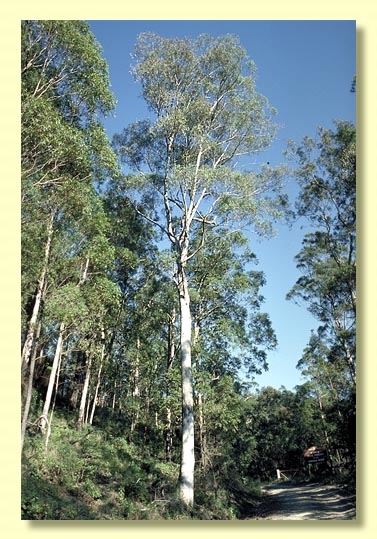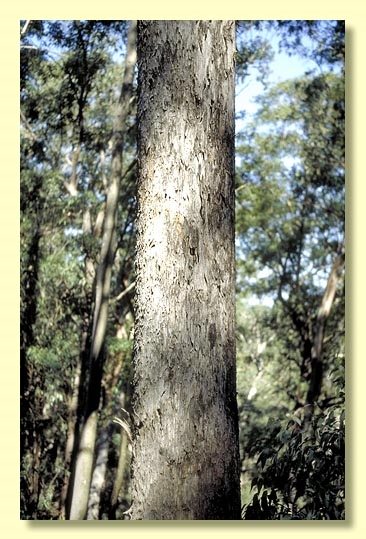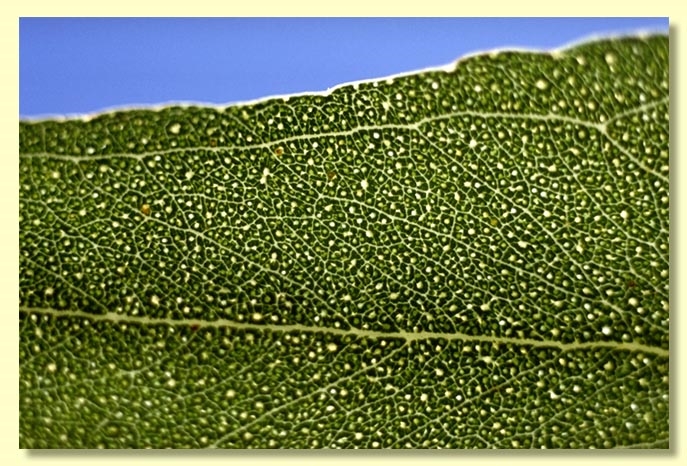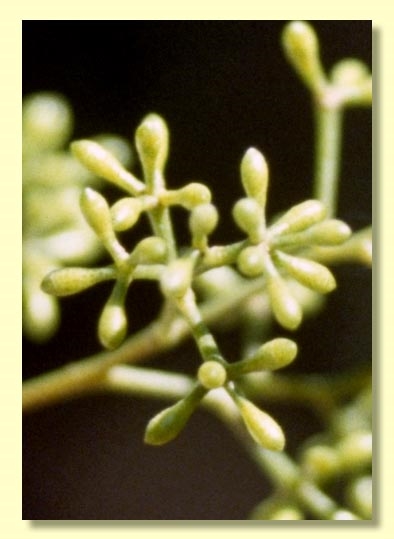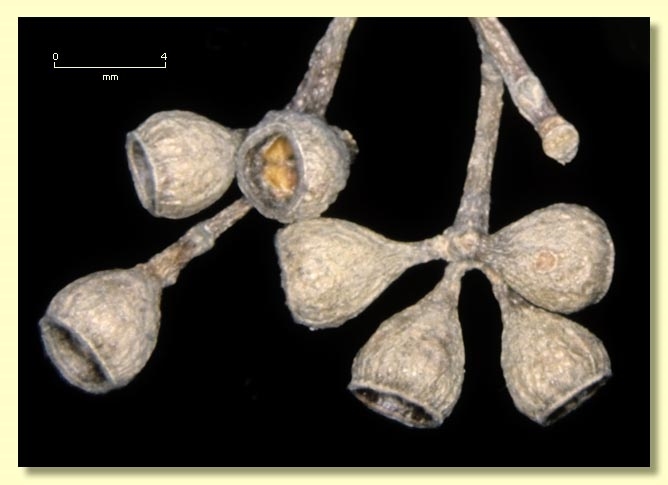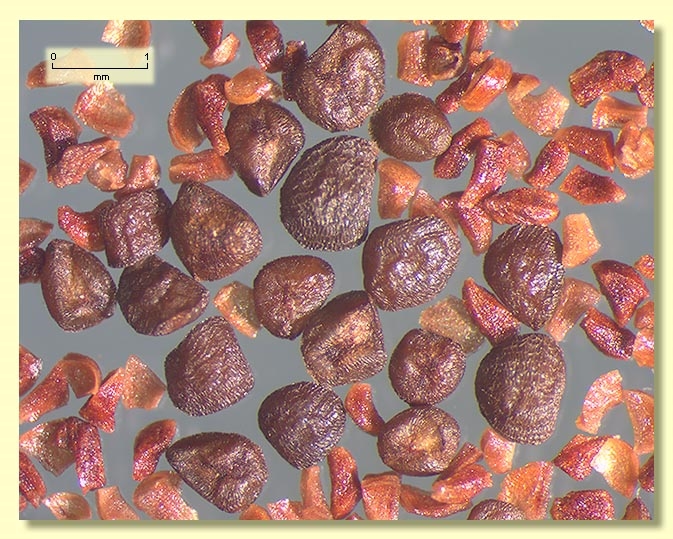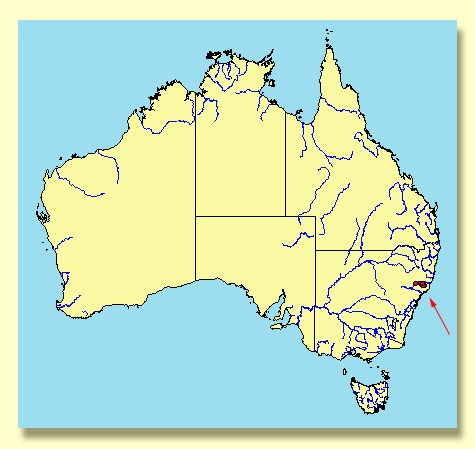Euclid - Online edition
Eucalyptus largeana
Eucalyptus | Symphyomyrtus | Adnataria | Apicales | Buxeales | Amissae
T: Avon State Forest, Craven, NSW, 25 June 1931, W.A.W.de Beuzeville & R.Large s.n.; holo: NSW.
Bark rough on trunk and often larger branches, box-type often tessellated, grey; smooth bark white or grey.
Juvenile growth (coppice or field seedlings to 50 cm): stems square in cross-section, slightly warty or smooth; juvenile leaves always petiolate, opposite for 2 to 4 pairs, then sub-opposite to alternate, ovate to lanceolate, 4.8–12 cm long, 1.5–5.5 cm wide, base tapering to petiole, discolorous, dull, green.
Adult leaves alternate, petiole 1.3–2.1 cm long; blade lanceolate to falcate, 11–19 cm long, 0.8–2 cm wide, base tapering to petiole, concolorous, glossy or dull, green, side-veins at an acute or wider angle to midrib, densely reticulate, intramarginal vein parallel to and remote from margin, oil glands island and intersectional.
Inflorescence terminal compound, or with some axillary compound, peduncles 0.2–0.9 cm long, buds 7 per umbel, pedicels 0.1–0.4 cm long. Mature buds ovoid, 0.5 cm long, 0.3 cm wide, green, scar present, operculum conical, stamens irregularly flexed, anthers adnate, cuboid to cuneate, dehiscing by lateral pores, style long, stigma pin-head shaped, locules 3 or 4, the placentae each with 4 vertical ovule rows. Flowers white.
Fruit pedicellate (pedicels 0.1–0.2 cm long), cupular to barrel-shaped, 0.3–0.4 cm long, 0.2–0.4 cm wide, disc descending, valves 3 or 4, enclosed.
Seeds brown, 1–2 mm long, flattened-ovoid, dorsal surface pitted, hilum ventral.
Cultivated seedlings (measured at ca node 10): cotyledons reniform to oblong; stems square in cross-section, warty; leaves always petiolate, opposite for 3 or 4 pairs then becoming alternate, ovate-lanceolate, 6–8.5 cm long, 1.5–3.2 cm wide, base tapering, margin entire, apex pointed, discolorous, dull, mid-green above, slightly paler beneath.
Flowering time not recorded.
A medium-sized to tall box tree species of restricted distribution in subcoastal ranges of northern New South Wales from north of the Hunter Valley to the upper reaches of the Macleay and Manning Rivers. It occurs in areas of high rainfall and is a tree of good form with rough box bark usually to the larger branches. It has the other box characters of terminal inflorescences and adnate anthers. Buds and fruit are small.
Eucalyptus largeana belongs in Eucalyptus subgenus Symphyomyrtus section Adnataria (the boxes) because the buds have two opercula, ovules are in four rows, seeds are flattened-ovoid, cotyledons are reniform, and anthers are rigid on the staminal filaments. Within section Adnataria, E. largeana belongs in a subgroup of ca 30 box species with mostly eastern and southern distribution, series Buxeales, further characterised by having some rough bark and buds that shed the outer operculum early in development. Within series Buxeales, E. largeana is most closely related to the widespread arid zone species, E. intertexta; and inland temperate Queensland species, E. orgadophila, because all stamens are fertile and leaves are concolorous.
Within its natural range in wetter subcoastal eucalypt forests Eucalyptus largeana is most likely to be confused with two other box species, E. rudderi and E. rummeryi. It differs from the restricted New South Wales endemic, E. rummeryi, which has discolorous adult leaves (i.e. paler on the underside) and more robust obconical fruit. E. rudderi, also endemic to New South Wales, differs in having some stamens lacking anthers (i.e. staminodes).

